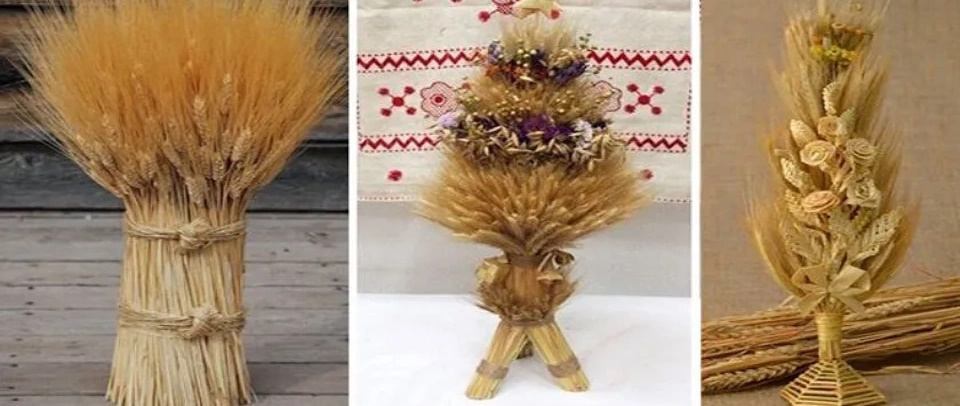Harvest Dolls
| Corn Lady handmade by Elaine Lindsay of Something Corny, Aberdeenshire, Scotland. Shared as the earth element in our centre in 2014. | 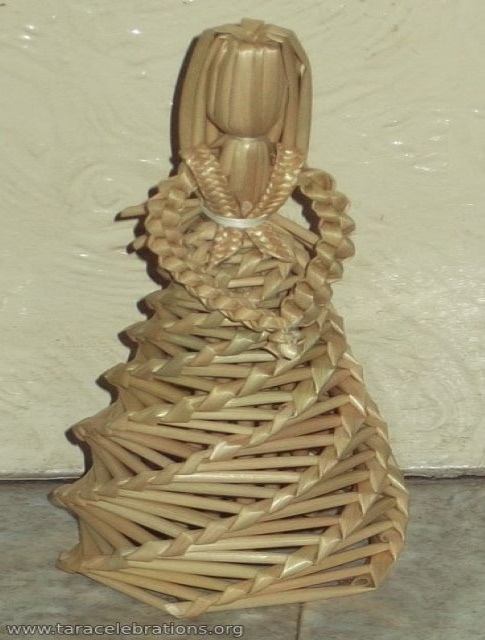 |
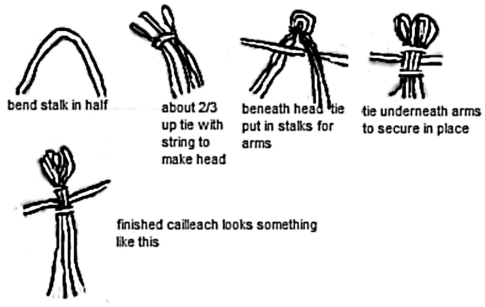
The corn dolly or cailleach, the old hag, sometimes fashioned from the first or often the last sheaf of the field, was woven into a golden figure. It is said how you bound the stalks together revealed how tidy a person you were at home. Better tight and clean than with trailing ears of corn and slack?
There are many designs, some as a figure or a symbolic
pattern such as a cornucopia.
| 2016 - Marta and Dana in Switzerland tried their hands at making straw dollies. | 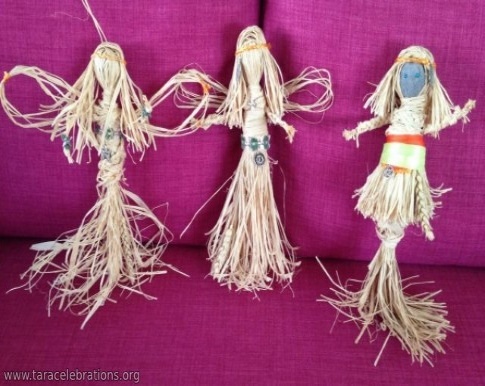 |
| This corn dolly, made during a ceremony, wears a ribbon given to us by the Ballyvourney priest who keeps the wooden statue relic of Gobnait. The ribbon has been 'measured' against the statue and having touched it carries the relic's healing vibrations. | 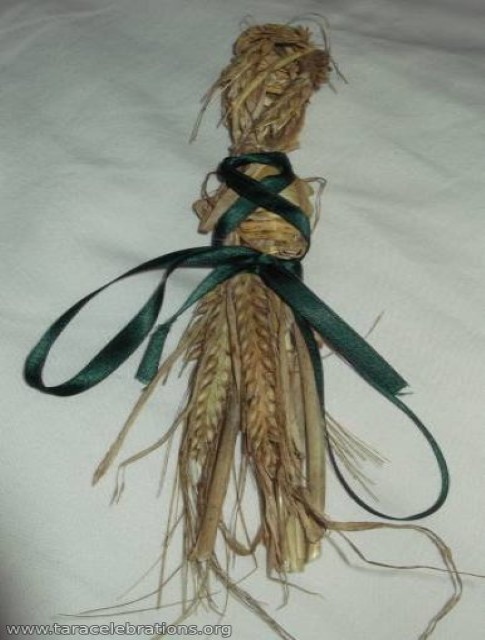 |
| Our centre at St. Gobnait's well in Cork was based on the corn dolly a representation of Crom Dubh. Read more here about Crom Dubh and Lughnasadh. Around the edge we have seasonal fruits, crystals, Rock Salt, Honey and Barley. | 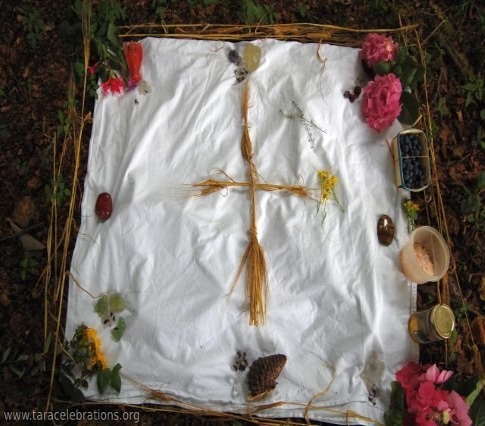 |
The corn dolly is often buried in a grave and this serves two purposes.
- The first to remind the earth how a crop should ripen for next year and
- secondly it represents the harvest of unwanted energies in our bodies and within the wider world.
The Corn dolly is believed to take these concerns to the under world where they are broken down and transformed by the great chemical laboratories of the earth and turned into nourishment for the crops.
The traditions rely on it as a representation of the current harvest. However, whatever the time of year you might care to fashion a corn dolly, maybe using string or wool if there is no corn available; remember some success or achievement and then bury it, asking the earth to bring about a renewal of that success in your life.
The spirit of the corn lived within the field and crop, harvest the corn and the spirit is homeless. At Teltown, returning a corn cailleach to earth to inspire next year's growth. |  |
Harvest is a time to mournHarvest is a time to mourn, In Spring we tell the corn we care
Harvest is a time of grief,
Harvest is a time of woe, | We bake the bread to fill our bellies Save some seeds, a few to sow, |
In Northern Ireland this last sheaf of wheat was called "Calacht". It was ritually cut by the harvesters as seen on this photo entitled "Cutting the ‘Calacht’" by WA Green. Image sourced from the National Museum of Northern Ireland. From - Old European Culture.
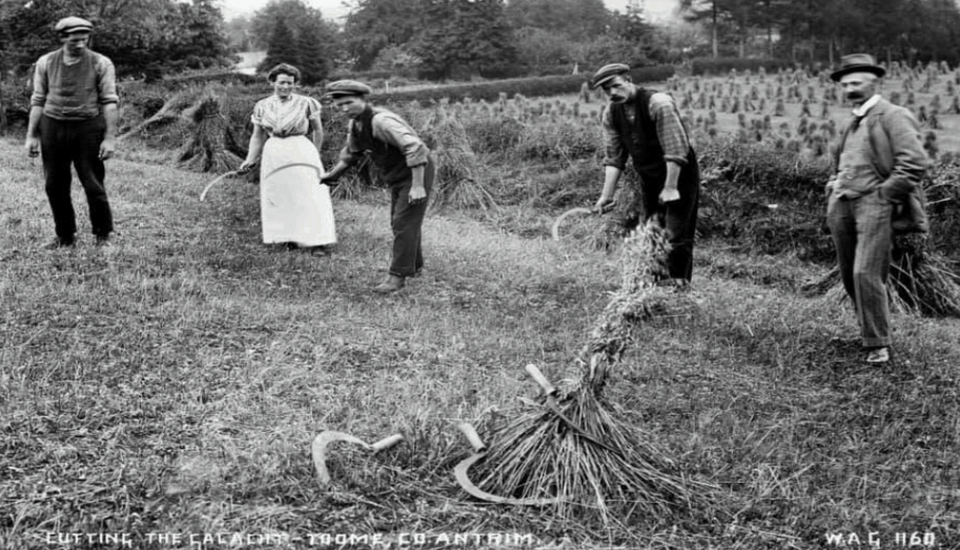
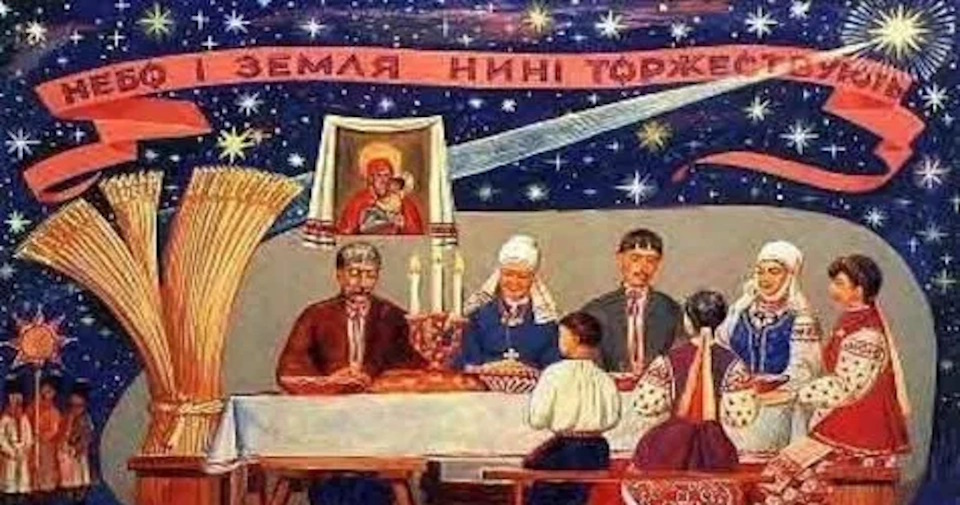
Didukh
Didukh, in Ukrainian дідух, is a traditional Christmas decoration. It can be considered a World Tree, which unites and supports all worlds. Thanks to its “legs,” it stands firmly, representing the roots, the
world of the dead. The upper part, which symbolizes the middle world,
the world of people, has seven spikelets in each bundle. Seven is one of
the symbolic numbers: seven weekdays, seven generations, and seven
rainbow colors.
Spikelets’ seeds are the upper world with deities, birds, and solar symbols. Made from the unthreshed ears of grain, used for baking bread, like
oats, rye, and wheat, it is a symbolic sacrifice taken from the autumn
harvest, and Didukh literally means “the spirit of ancestors”. Didukh and how to make it
On Sviat Vechir (Christmas Eve), the didukh is brought into the house by the hospodar (head of the household). It is placed in the kutia (corner with icons) of the house, along with the kutia (ritual food) and uzvar (ritual drink). On Manusia/Maslenitsa, didukh is burnt symbolizing the end of the winter. Spiritual meaning of Didukh It is believed that the spirits of the household's ancestors reside in didukh during the holidays While it is at a place of honor inside the house, the souls of all ancestors will unite and bless the family.
See How to make and symbolic significance
